Intro
Discover what SKU stands for and its significance in inventory management, product cataloging, and stock keeping, including SKU numbers, codes, and best practices.
The term "SKU" is an acronym that stands for "Stock Keeping Unit." It refers to a unique identifier assigned to a specific product or item in a company's inventory. The SKU is used to track and manage the product's stock levels, pricing, and other relevant information. In essence, the SKU is a code that helps businesses keep track of their products and ensure that they have the right quantities in stock to meet customer demand.
The use of SKUs has become increasingly important in today's fast-paced business environment, where companies need to be able to quickly and accurately manage their inventory levels. With the rise of e-commerce and online shopping, the use of SKUs has become even more critical, as businesses need to be able to track and manage their products across multiple sales channels. Whether you're a small business owner or a large retailer, understanding what an SKU is and how it works can help you to better manage your inventory and improve your overall business operations.
In the world of retail and e-commerce, SKUs play a vital role in helping businesses to stay organized and efficient. By assigning a unique SKU to each product, companies can easily track their inventory levels, monitor sales trends, and make informed decisions about which products to stock and which to discontinue. Additionally, SKUs can help businesses to streamline their supply chain operations, reduce errors, and improve customer satisfaction.
Understanding SKUs

To understand how SKUs work, let's break down the components of a typical SKU. A standard SKU usually consists of a combination of letters and numbers that identify the product, its category, and its attributes. For example, a SKU for a pair of shoes might look like this: "SHOES-RED-10-M." In this example, the SKU breaks down into the following components: "SHOES" identifies the product category, "RED" identifies the color, "10" identifies the size, and "M" identifies the width.
Benefits of Using SKUs

The use of SKUs offers several benefits to businesses, including:
- Improved inventory management: SKUs help businesses to track their inventory levels and ensure that they have the right quantities in stock to meet customer demand.
- Increased efficiency: SKUs streamline the supply chain process, reducing errors and improving the overall efficiency of business operations.
- Enhanced customer satisfaction: By ensuring that products are in stock and available for delivery, businesses can improve customer satisfaction and reduce the risk of stockouts and backorders.
- Better decision-making: SKUs provide businesses with valuable insights into sales trends and product performance, enabling them to make informed decisions about which products to stock and which to discontinue.
How to Create SKUs

Creating SKUs is a relatively straightforward process that involves assigning a unique code to each product in your inventory. Here are the steps to follow:
- Determine the product category: Identify the category of the product, such as shoes, clothing, or electronics.
- Identify the product attributes: Determine the attributes of the product, such as color, size, and material.
- Assign a unique code: Assign a unique code to the product that combines the product category and attributes.
- Use a consistent format: Use a consistent format for all SKUs to ensure that they are easy to read and understand.
Best Practices for Using SKUs

To get the most out of SKUs, businesses should follow best practices, such as:
- Using a consistent format for all SKUs
- Keeping SKUs concise and easy to read
- Avoiding the use of special characters or punctuation
- Using a unique SKU for each product variant
- Regularly reviewing and updating SKUs to ensure that they remain accurate and relevant.
Common Mistakes to Avoid
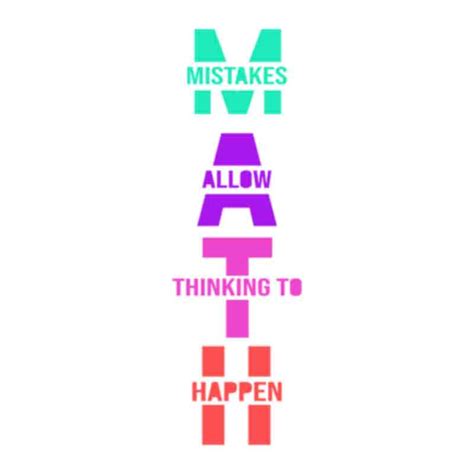
When using SKUs, businesses should avoid common mistakes, such as:
- Using duplicate SKUs for different products
- Failing to update SKUs when product information changes
- Using SKUs that are too long or too short
- Failing to train staff on the use of SKUs
- Not regularly reviewing and auditing SKUs to ensure that they remain accurate and relevant.
Real-World Examples of SKUs
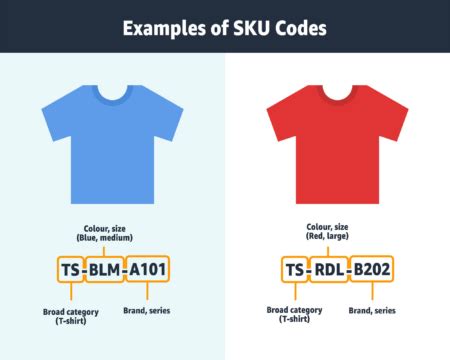
To illustrate the use of SKUs in real-world scenarios, let's consider a few examples:
- A fashion retailer uses SKUs to track their inventory of clothing and accessories. Each product has a unique SKU that combines the product category, color, size, and material.
- An electronics retailer uses SKUs to track their inventory of TVs, laptops, and smartphones. Each product has a unique SKU that combines the product category, brand, model, and features.
- A food manufacturer uses SKUs to track their inventory of products, such as cereal, snacks, and beverages. Each product has a unique SKU that combines the product category, flavor, size, and packaging type.
Gallery of SKU Examples
SKU Image Gallery
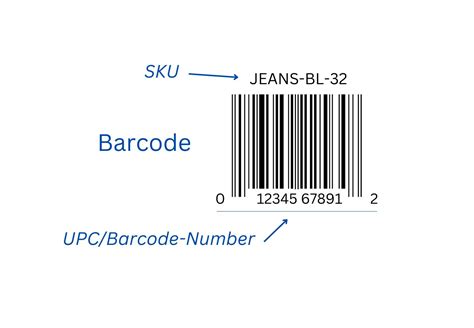
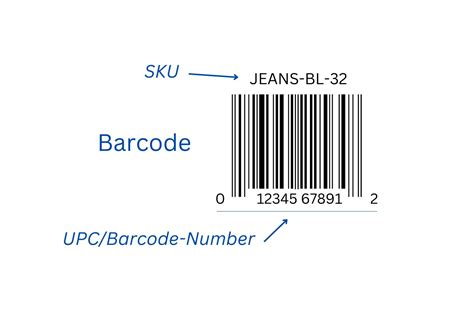
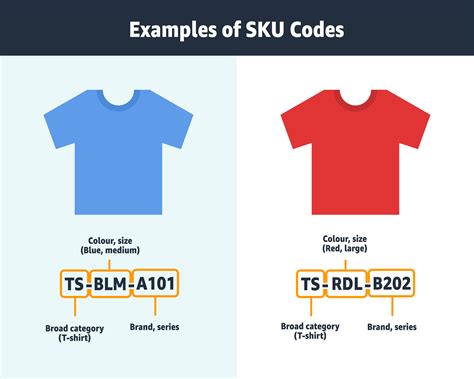
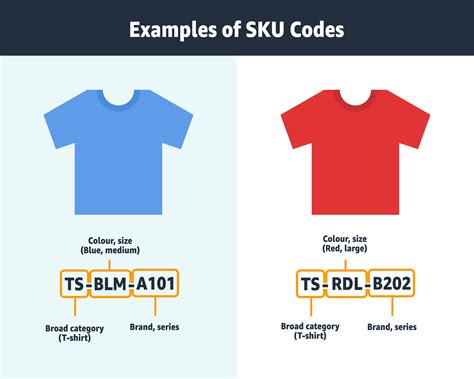
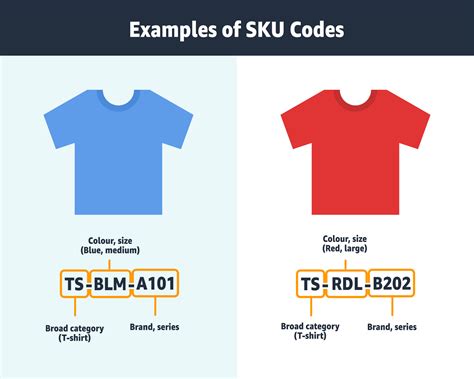
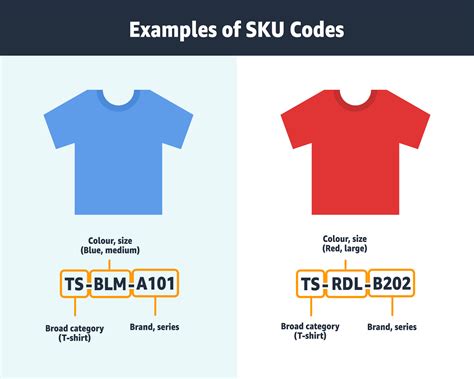
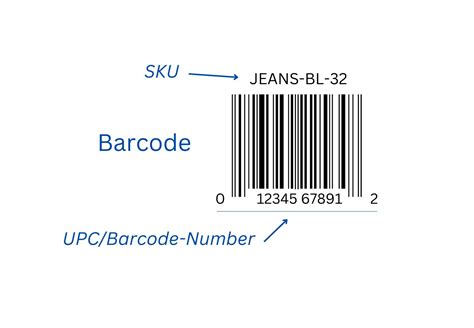
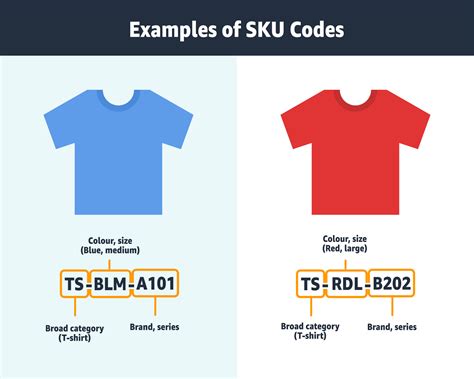
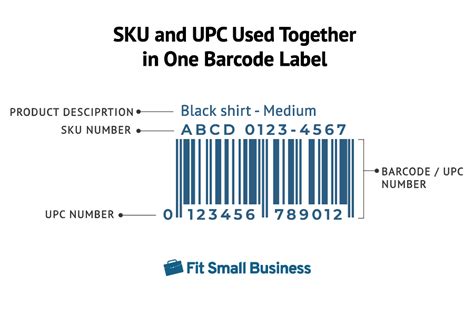
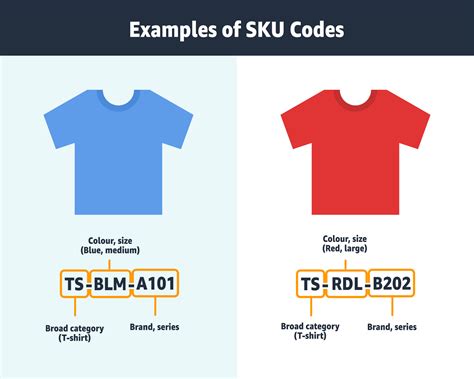
Frequently Asked Questions
What is the purpose of a SKU?
+The purpose of a SKU is to uniquely identify a product and track its inventory levels, pricing, and other relevant information.
How do I create a SKU?
+To create a SKU, determine the product category, identify the product attributes, assign a unique code, and use a consistent format.
What are the benefits of using SKUs?
+The benefits of using SKUs include improved inventory management, increased efficiency, enhanced customer satisfaction, and better decision-making.
Can I use the same SKU for different products?
+No, it is not recommended to use the same SKU for different products, as this can lead to confusion and errors in inventory management.
How often should I review and update my SKUs?
+It is recommended to review and update your SKUs regularly, such as quarterly or annually, to ensure that they remain accurate and relevant.
In conclusion, understanding what an SKU is and how it works can help businesses to better manage their inventory and improve their overall operations. By following best practices and avoiding common mistakes, businesses can get the most out of their SKUs and achieve greater efficiency, productivity, and customer satisfaction. Whether you're a small business owner or a large retailer, using SKUs can help you to stay organized, streamline your supply chain, and make informed decisions about your products and inventory. So why not start using SKUs today and see the benefits for yourself? We invite you to share your thoughts and experiences with SKUs in the comments below, and don't forget to share this article with your friends and colleagues who may benefit from learning more about this important topic.
